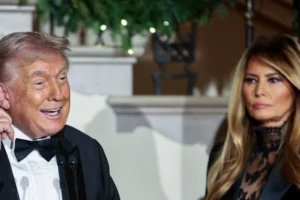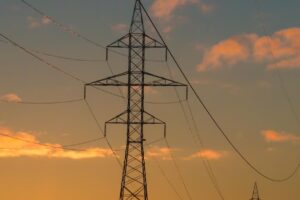
If you’ve spent any time on social media in recent years, you would have seen people criticising Australia’s high levels of immigration, for various reasons.
But in recent months, we’ve seen some of the most severe criticisms of high immigration coming from people who work for the exact organisations that have been among the biggest supporters of high immigration for the past few decades.
Have the political winds suddenly shifted? It raises many interesting questions.
The history of migration numbers
Let’s revisit the pro-high immigration arguments from some of the political organisations in this country.
Start with this fascinating article from 2008.
It’s wrong to say Australia hasn’t had an immigration strategy for decades
It was written by Richard Allsop, a research fellow at the Institute of Public Affairs (IPA), and published in the IPA Review in March 2008.
Back then, think tanks such as the IPA were still feeling politically triumphant, given the hand they’d played in creating the modern Australia we’re now living in.
The IPA was confidently “free-market”, and many of its members had long promoted a certain strain of liberalism called Classical Liberalism.
For that 2008 article, Mr Allsop surveyed the history of Australia’s migration intake, and Australia’s use of trade tariffs, since federation in 1901.
And he found the Liberal side of politics in Australia had always delivered higher immigration, and Labor governments had delivered lower tariffs:
“Two of the most fundamental liberal freedoms are the free movement of people and goods across borders,” he declared.
“In Australian politics, individuals of liberal persuasion have always struggled to find one side of politics that has reliably supported both increased immigration and lower tariffs at the same time.
“However, our two major political parties have had such a remarkably consistent record that one can confidently say:
Immigration will always be higher under a Liberal government and;Tariffs will always be lower under a Labor government.
“This may seem counter-intuitive, but the lesson of history is clear.
“When it comes to the movement of people and goods the Liberal Party is the party of social liberalism and the Labor Party is the party of economic liberalism.
“Of course there have been exceptions — most notably the post-war migration expansion commenced under the Chifley Labor government — but this was certainly an exception to the general rule.”
Notice how Mr Allsop characterised high immigration as being about “social liberalism” rather than “economic liberalism”.
There’s a linguistic game being played there, given the obvious ways in which employers and governments use immigration for economic purposes.
In recent decades especially, our politicians have used higher rates of immigration to expand the pool of available labour for employers, to seek more taxpayers and more growth, to source cheap labour for our farmers, to boost education exports, and to delay population-aging, none of which are motivated by high philosophical principles.
But let’s get back to his broader argument.
A reconfiguration of migration
In that 2008 article, Mr Allsop said the immigration record of John Howard’s Coalition government (1996-2007) had matched the historic pattern.
“The Howard government, like all its Liberal predecessors, was a high immigration government, particularly in its latter years, topping 140,000 [permanent migrants] in its final full year 2006-07,” he wrote.
First wave of climate migrants to keep culture alive in Australia
“It was under John Howard that, for the first time since federation, the overseas-born proportion of the population exceeded 24 per cent, and it was also under Howard that the non-European component of the overseas born went above 50 per cent for the first time.
“And as well as increasing overall numbers, the Howard government progressively increased the refugee intake from 3,802 in 1999-2000 to 6,022 in 2005-06.”
He noted that the journalist George Megalogenis had “sagely” observed in 2006 that “the former Hansonite belt … think Howard is keeping out all the foreigners, when he is bringing them here at a rate Paul Keating never contemplated”.
And he finished his article by urging Australia’s new Labor prime minister at the time, Kevin Rudd, to maintain Howard’s record-high rate of immigration.
“One hopes that the Rudd Government can overturn a century of Labor history and continue our current high immigration intake,” he wrote.
A surge in permanent and temporary migration
Now, the below graph does not come from Mr Allsop’s article, but it shows the numbers he was talking about.
Mr Allsop was focusing on Howard’s boost to the permanent migration intake, and he said little about temporary migration.
But by the time Howard left office in 2007, his government had lifted Australia’s overall immigration intake (permanent and temporary migrants combined) to record levels.
The main permanent and temporary work visa categories jumped from 162,000 in 1995-96 to over 439,000 in 2007-08.
The number of permanent migrants, and workers on temporary visas, both grew strongly under the Howard Government (1996-2007). (Source: Chris F. Wright, “How Do States Implement Liberal Immigration Policies? Control Signals and Skilled Immigration Reform in Australia,” Governance: An International Journal of Policy, Administration, and Institutions, Vol. 27, No. 3, July 2014)
Rudd Labor Government breaks the pattern with a ‘Big Australia’
Fast forward four years.
In 2012, another research fellow at the IPA, Chris Berg, then rehashed the analysis from Mr Allsop’s 2008 article, for his own article.
It is also worth reading.
The immigration question
Mr Berg noted in his piece, approvingly, that the Labor governments of Kevin Rudd and Julia Gillard (that had followed Howard’s government), had surprisingly broken Australia’s old partisan cycle on immigration.
“Rather than immediately shrinking the intake, Rudd continued the trend upwards — hugely,” he wrote.
“Even Julia Gillard’s government — she of small Australia fame — has not appreciably reduced the number of migrants we take.”
Mr Berg also noted, with concern, that then-opposition and Liberal party leader Tony Abbott might cut immigration if he won the upcoming 2013 federal election.
“If Tony Abbott becomes Prime Minister next year, he is going to have to make a decision: what to do about immigration?” he wrote.
“Does he want to continue the Liberal legacy — a legacy of mass migration and population growth? Or, as he has at times unfortunately suggested, does he want to repudiate it?” he asked.
Mr Berg was concerned about Mr Abbott’s intentions for immigration because, a couple of years earlier, in the 2010 federal election campaign, Ms Gillard and Mr Abbott had both criticised the idea of a “Big Australia” (famously promoted by Kevin Rudd) and had started promoting the benefits of reducing or slowing migration.
Free-market think tanks like the IPA and the Centre for Independent Studies (CIS), and the editorial writers at the Australian Financial Review, heavily criticised Gillard and Abbott for that anti-immigration stance.
In 2011, a research fellow at the CIS, Jessica Brown, explained why Australia’s government had little control over our country’s population growth since we now have a “globalised workforce”.
“Rather than asking central planners to set firm targets or caps for particular types of skilled visas, we largely leave it to the market to decide,” she wrote.
“Governments don’t like to admit this, but it is incredibly difficult for them to predict — let alone control — what net overseas migration will be from year to year.”
She continued:
“Why don’t politicians tell us the truth that short of some pretty radical policy changes, they really don’t have much control over how fast our population grows?
“The debate about population growth in the lead up to the last federal election, and the response from both sides of the political spectrum, suggests that it is far easier for politicians to talk about cutting population growth than it is for them to address some of the complex challenges brought about by population growth.”
Now the arguments change
Now jump to 2025.
The composition of our population and migration program looks very different today compared to 80 years ago.
The changes have been slow, but profound, and as each new wave of migrants has been welcomed to Australia, Australian culture and society has adapted and evolved.
Australia’s population increased from 3.8 million in 1901 to 25.7 million in 2021, driven by immigration. (Source: Australian Bureau of Statistics, Historical Population, 2021)
But in recent months, the IPA’s new chief economist, Adam Creighton, has been writing extremely critically of Australia’s high rate of immigration.
It’s been fascinating to watch.
He recently finished his reporting stint as The Australian’s Washington correspondent in the United States, where he observed the Biden and Trump administrations up close.
US looks to send ‘third country nationals’ to Palau
In his new role as IPA chief economist, he still writes regularly for The Australian.
And in one of his most-recent pieces, he laid into the Albanese government for Australia’s currently very high net immigration.
“The vast bulk of these new arrivals are from developing nations, where English isn’t a first language nor Christianity a majority religion,” he wrote.
“A cynic could think the political class is seeking to destroy Australian culture.
“In fact, I caused a fuss last week when I posted the response of the latest version of ChatGPT to a provocative question: ‘If Australia’s government wanted to covertly erase the nation’s British/Irish/European heritage, would the immigration program look much like the one in existence today?’
“The answer shocked me.”
He said the AI-platform responded with:
“If a government wanted to significantly alter the nation’s cultural identity without provoking open resistance, it would likely follow this exact playbook – fast, opaque, technocratic and couched in neutral-sounding economic terms.”
Of course, that wasn’t Mr Creighton saying those things. It was ChatGPT. He was simply telling you what ChatGPT said, when prompted.
But he used that example to springboard into a larger discussion.
“The seven million-plus illegal immigrants largely from developing countries that poured into the US during the Biden administration shocked many. Yet proportionately the influx into Australia has been greater, albeit legal,” he warned.
“Rather than paying Mexican drug cartels, our arrivals pay exorbitant fees to migration agents and increasingly unscrupulous, revenue maximising tertiary education providers whose qualifications typically provide work rights in Australia.
“This country’s laudable and world-beating tolerance for newcomers has allowed us to avoid the social breakdown extant in Europe. But this will fray.
“Politicians and journalists, who overwhelmingly live in expensive suburbs, should realise the potential social mess that’s being created in our outer suburbs.”
It is typically not the type of language you’d hear from an organisation that has traditionally been a cheerleader of high immigration.
Although, it does match the tone of some of the institute’s more recent output.
Have the political winds shifted?





